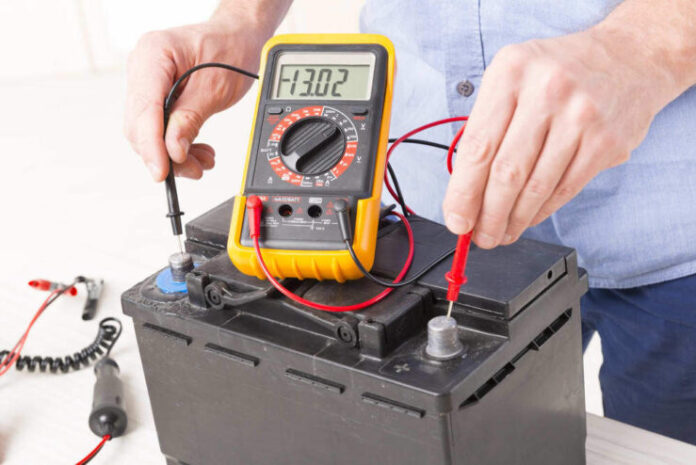
There can be various factors affecting the overall battery life of a deep cycle battery. In this article, we’ll try to go over all these factors and try to diagnose the performance of your malfunctioning battery.
Most of the time, batteries can be recovered with some techniques and sometimes there is just no use in trying to recover a battery.
How to check if a deep cycle battery is good?
Let us first try to understand when can we declare a battery to be irreparable. For this, we must consult the battery voltage chart of that particular battery.
In deep cycle batteries, the voltage generally falls with discharging and that is alright. As such, a certain level of discharge should have the battery on a certain level of charge.
Let us consider this. A battery is rated to have a12.8V when 100% charged. Now if that is the case in real life, you can say that the battery is in perfect state. Anything over a 12V is okay. As the battery gets older, this level will fall gradually. If you take a reading and find the voltage to be less than 11V, chances are your battery is in very bad state and can hardly retain any charge at all.
In such cases, trying to revive the battery is pretty pointless and you should just get a new battery.
Sometimes, you may also notice that the battery just won’t charge upto 100%, no matter how long you charge it. In reality, when you charge a battery, it gets harder and harder to charge as the battery approaches 100% charging. In case of bad batteries, it is really hard to get upto that level. Hence you see that your battery doesn’t charge well.
How to tell if a car battery has a dead cell?
It is very simple to tell if one or more cells in your battery are dead. Car batteries are usually starting batteries that need to be properly charged to function adequately. A dead battery cell can affect this greatly.
To check if the car battery has a dead cell, all we need to do is check the voltage between the terminals.
If your battery is on charge and still reads 10.5V or so, there’s a dead cell in your battery. A battery consists of a number of individual cells that add up to a complete 12V. Dead cells don’t allow that to happen. It can be really bad for a car battery as low voltages can make cranking really difficult.
How to tell if a 6V battery is bad?
6 volt batteries are quite different from 12 volt ones. They are easily discharged and can die quickly if not taken proper care of. A 6V battery reading anything below 5V is pretty drained and possibly irreversibly dead.
What is sulfation?
Sulfation is something that constantly happens in your batteries when they get discharged and usually, they do not harm the battery. It only affects the battery when the battery is left discharged for a really long time.
There are generally two types of sulfation. Permanent and temporary. Temporary sulfation is removed whenever you charge your battery. Sulfation covers your cells with unreactive compounds that damage the overall reactivity of the cells making the battery lose the charge holding capacity. When you charge your battery regularly, this layer of unreactive material is washed off and is turned back into the electrolyte.
However, if you leave your battery discharged for long, this layer becomes permanent and starts to affect the performance of your battery. The battery starts to heat up quickly and it takes longer to charge your battery.
To prevent permanent sulfation, follow these rules.
- Don’t store your battery in hot places.
- Do not put away a discharged battery.
- Even if charged, make sure your battery does not fall below 12V when stored away.
How to check the inverter battery with a multimeter?
Multimeters, while performing a lot of different jobs, can help you find the voltage level of your battery easily. Follow these steps to easily check your inverter battery at home using a multimeter.
- Set the dial to 20V DC on your multimeter. Different multimeters have different ways of telling which is the DC mode. Most multimeters have something like a dashed line or a DC mark to say which is the DC range. Set the battery to 20V as that is closest to your battery voltage.
- Identify the negative and positive terminals of your multimeter. The negative terminal will have a black wire and the positive will have a red wire. In case you manually inserted the prongs, check the base of the multimeter to make sure you have them right, in order to protect your battery.
- Identify your battery terminals. The negative terminal should be colored in black or atleast have a (-) sign somewhere around. Similarly, for the positive terminal, look for the terminal marked in red or the one having a (+) sign.
- Once, you’re ready, connect the negative of the multimeter to the negative of the battery and then connect positive to positive. You should now have the reading on the multimeter screen.
Hope this article helped you to find out what was wrong with your battery. Remember, proper usage and maintenance are the keys to a perfectly functioning battery.






